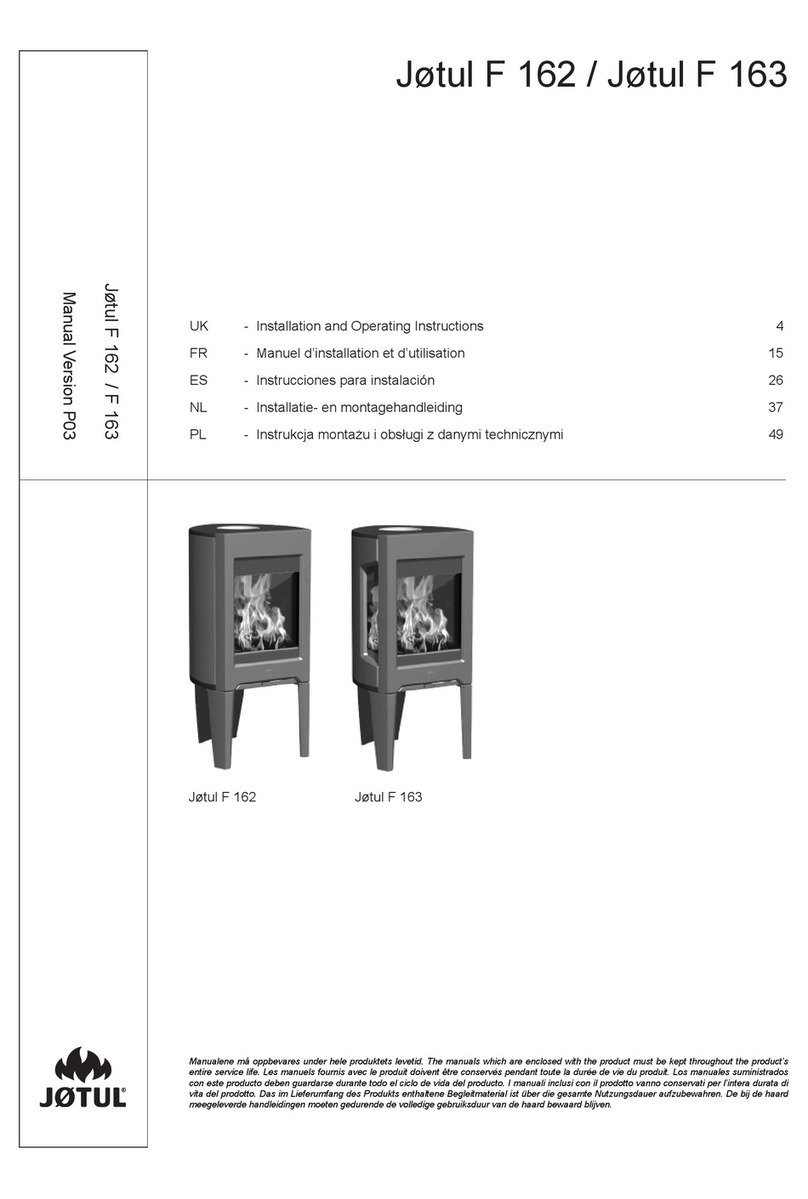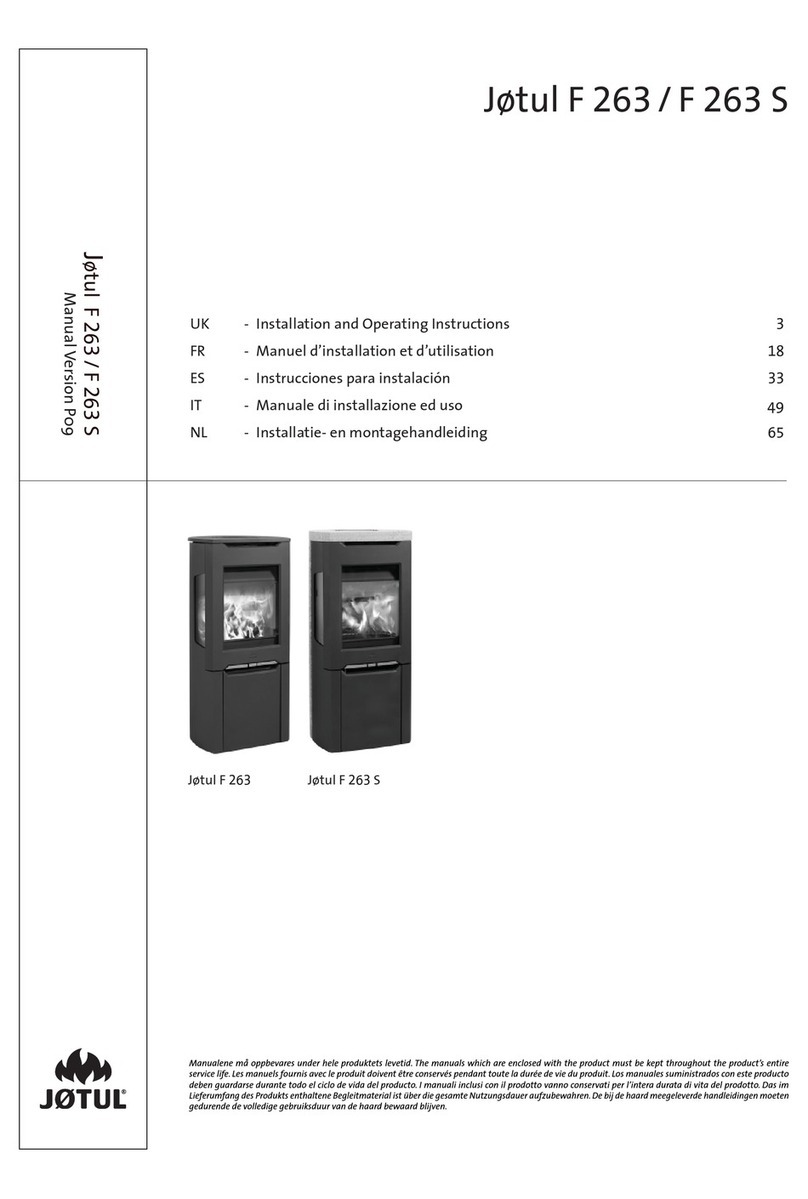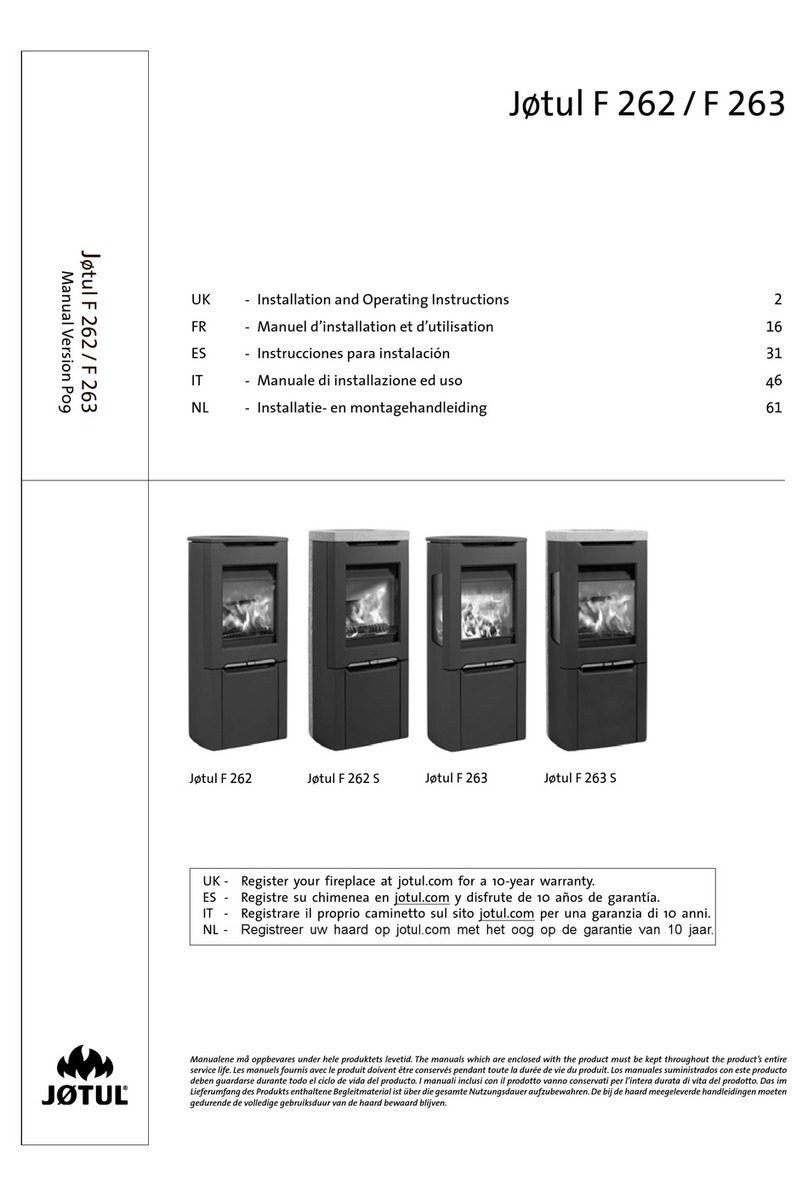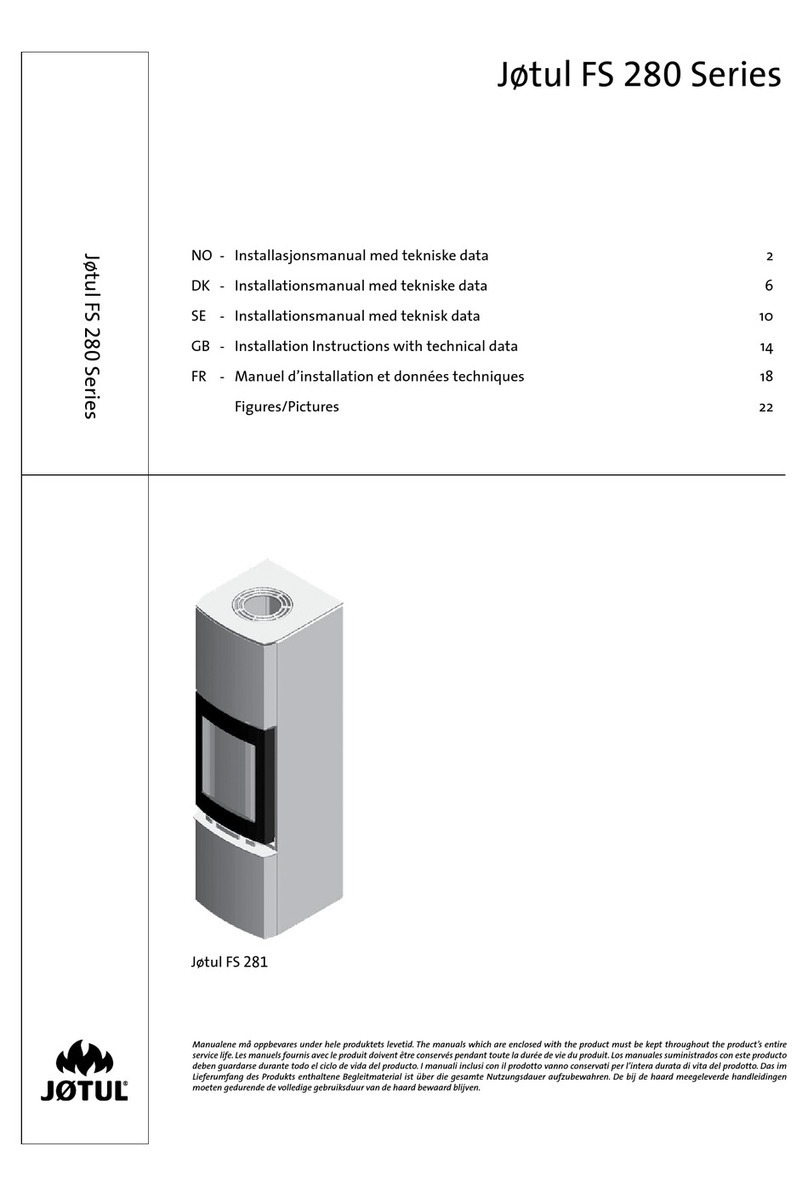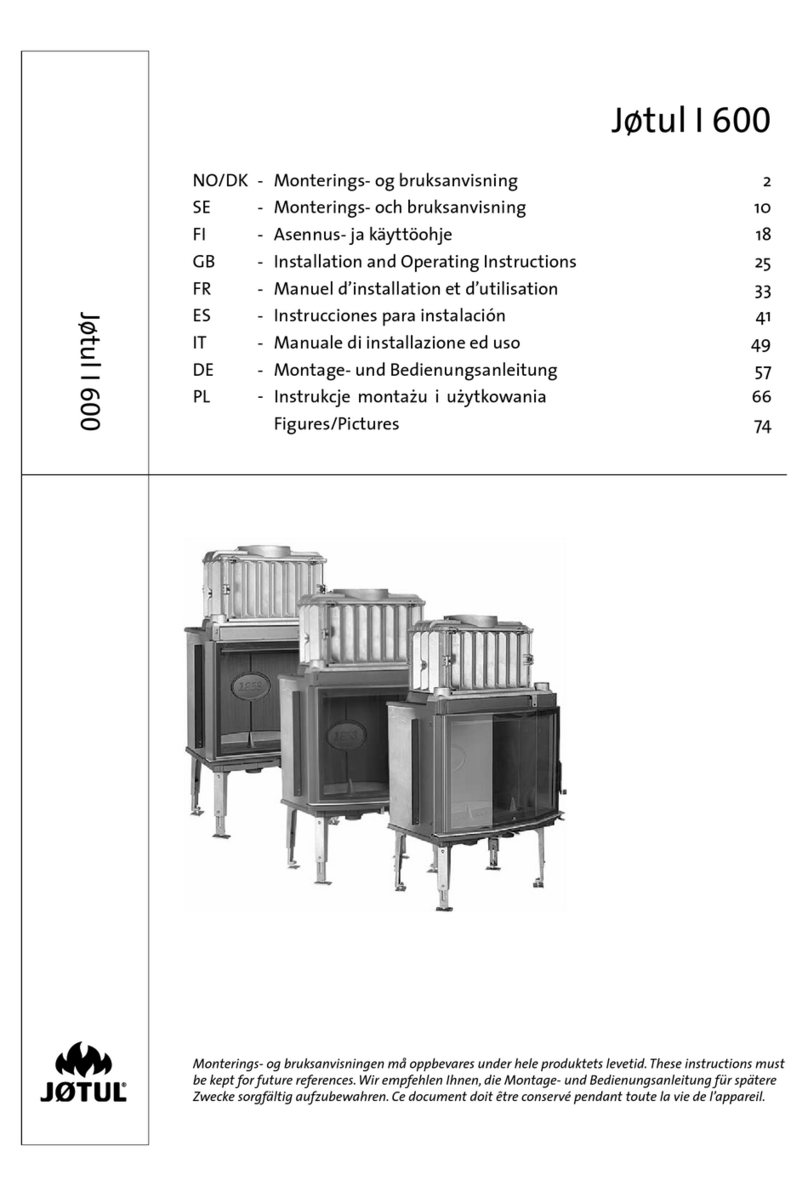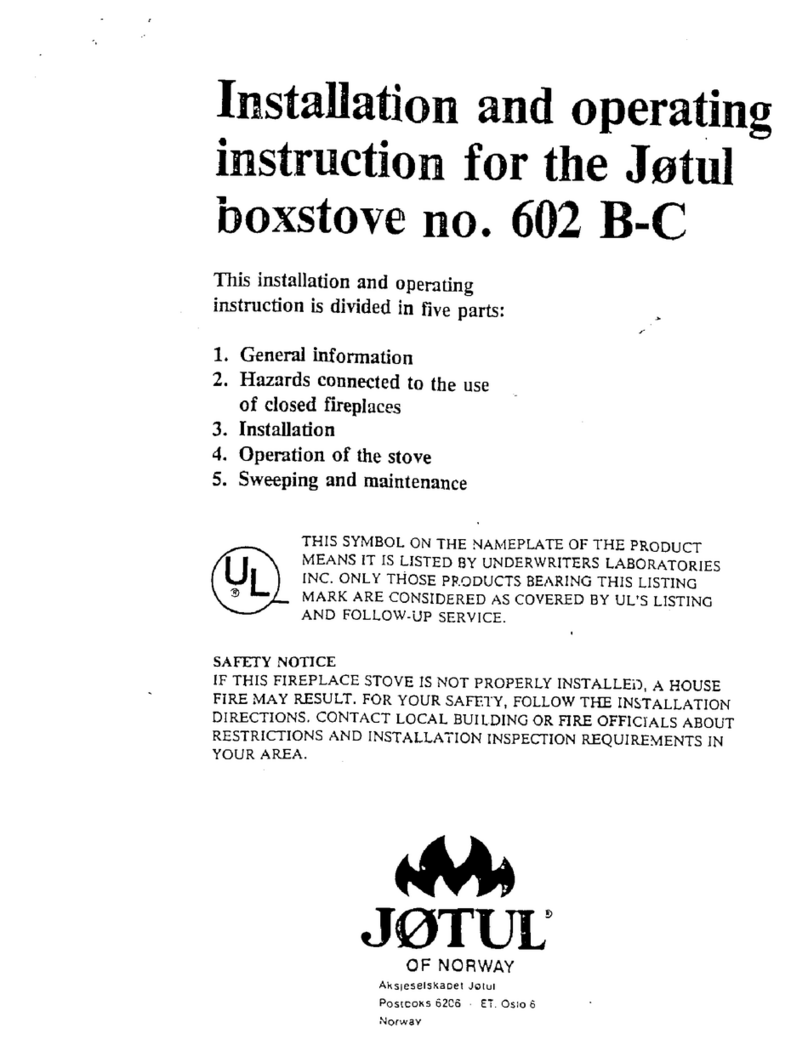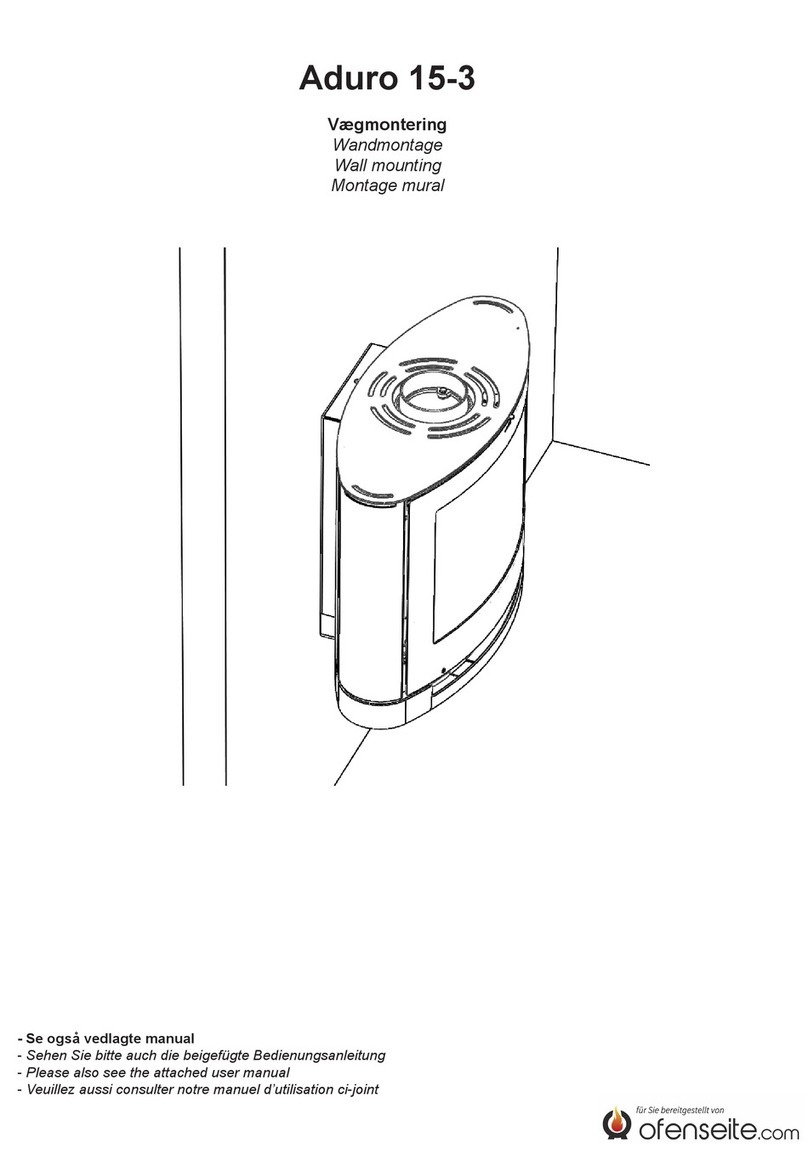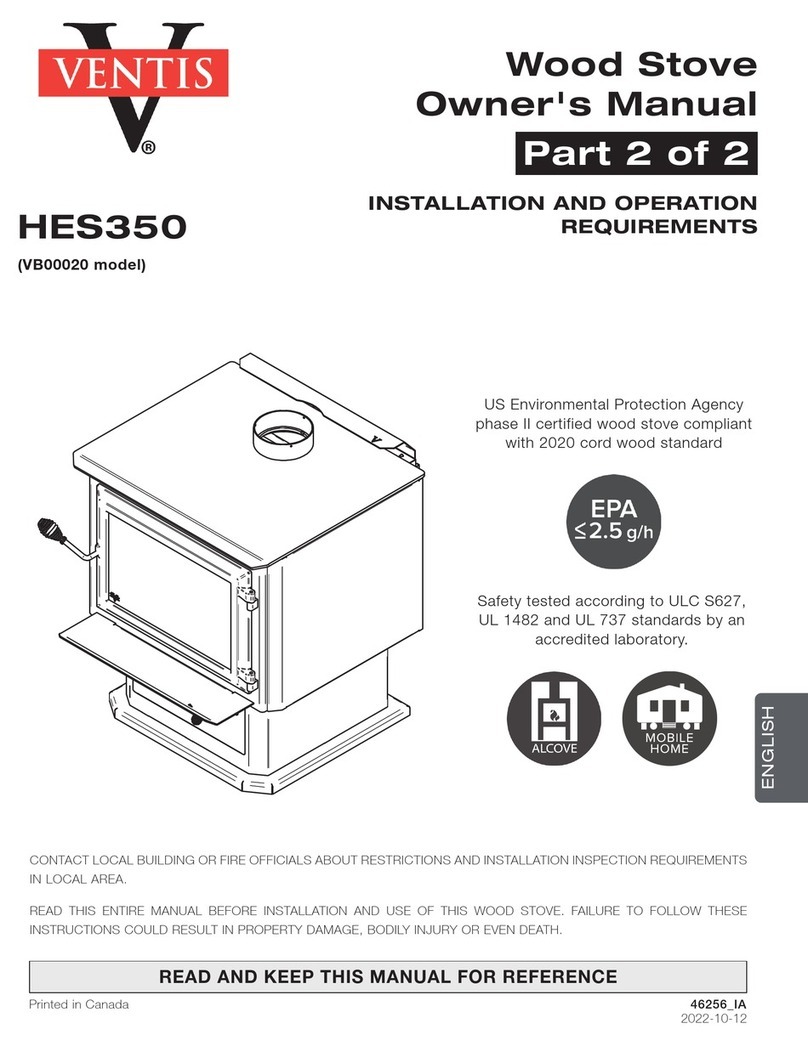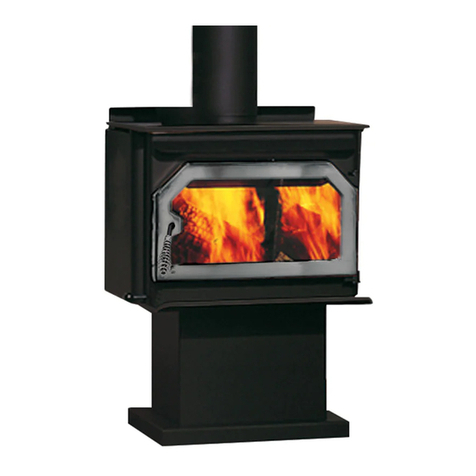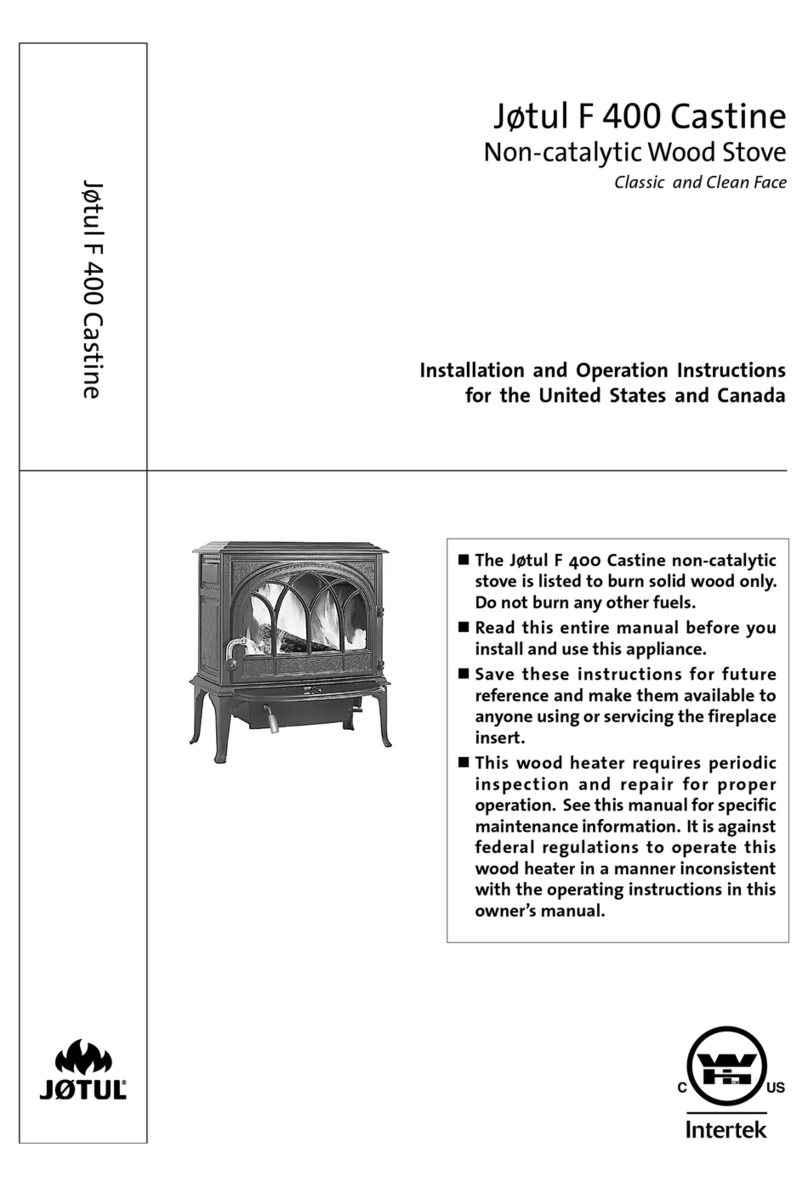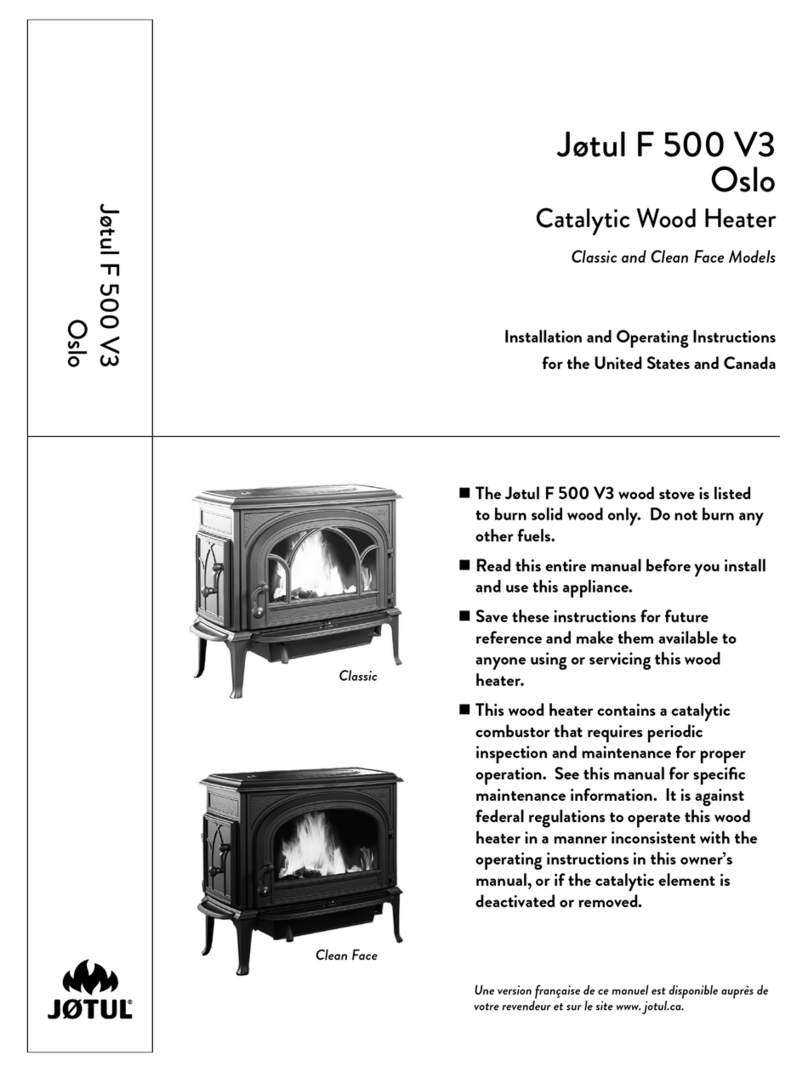potential for a chimney fire. Use of unseasoned wood defeats
the purpose of any modern wood-burning stove.
DO NOT BURN:
• Coal;
• Garbage;
• Synthetic fuel or logs;
• Material containg rubber, including tires;
• Material containing plastics;
• Waste petroleum products, asphalt products, paints,
paint thinners or solvents;
• Materials containing asbestos;
• Construction or demolitioin debris;
• Railroad ties or pressure-treated wood;
• Manure or animal remains;
• Salt water driftwood or other previously salt-water;
saturated materials;
• Unseasoned wood; or
• Paper products, cardboard, plywood, or particle board. (The
prohibition against burning these materials does not prohibit the
use of fire starters made from paper,cardboard,saw dust,wax or
similar substances for the purpose of starting a fire.)
The burning of any of these materials can result in the release of
toxic fumes, or render the heater ineffective and cause smoke.
Never use gasoline,gasoline-type lantern fuel,kerosene,charcoal
lighter fluid, or similar liquids to start or “freshen-up” the fire.
Always keep such liquids away from the heater at all times.
NOTE: Avoid letting logs rest directly on the glass panel.The logs
should be spaced off of the glass enough to allow for proper air
flow within the firebox.
5.4 Air Flow and Control
Your Jøtul F 400 CB is designed to support efficient combustion
and heat transfer by directing air through the stove in two
separate channels; Primary and Secondary. See figure 11.
Primary air is manually regulated by a lever and valve at the front
of the stove.The valve position controls the volume of primary air
entering the firebox and thereby affects fire intensity,heat output
and burn time. Primary air is directed to the main body of the fire
through air ports at the front of the stove. Separate manifolds
at each side also deliver pre-heated primary air at top of front
plate to create an ’air-wash”to help keep the viewing glass clean.
Secondary air allows combustion of volatile gas and other by-
products of primary combustion that would otherwise enter
the atmosphere unburned. This unregulated air is preheated as
it passes over the back of the stove and through a stainless steel
manifold at the top of the firebox. This additional hot oxygen
allows any unburned gasses to be burned inside the stove. The
action of secondary combustion can be readily seen through the
viewing glass a slow, rolling flames suspended over the main
fuel bed and smaller jets of flame extending from the secondary
manifold ports. At the same time, no smoke will be observed
exiting the chimney.This is evidence that the stove is operating at
the so-called ”sweet-spot”wherein optimum efficiency is realized.
When first starting or reviving the fire: the primary control
lever should be set to the far right position, which permits the
maximum amount of air into the stove. The greater the amount
of air entering the stove, the hotter and faster the fire will burn.
Moving the lever to the left reduces the airflow into the stove
which prolongs the fire at a lower heat output. See figure 12.
Use a Stove-top Thermometer
Determining the primary air setting for the best overall
performance for your particular needs and installation will be
established over time through trial and error. Each installation
has unique characteristics that will affect stove performance.
You should use a stove-top thermometer to monitor the status
of the fire. Place the thermometer on the stove top, centered
two one side or the other. See fig. 13. Generally speaking, once
the stove temperature has reached 400°F - 600°F, the air control
may be set in a mid-range position to allow adequate oxygen to
support efficient combustion throughout the burn cycle.
5.5 Break-In Procedure
The Jøtul F 400 CB is constructed of cast iron and stove furnace
cement. Cast iron,while very durable,expands and contracts as it
is heated and cooled.This type of construction requires the stove
to be “broken-in” gradually so that thermal expansion does not
occur too quickly.The following steps describe the proper break-in
procedure for the Jøtul F 400 CB:
1. Light a small fire of newspaper and kindling. Only allow the
stove to reach a maximum surface temperature of 200°F (93°
C). Burn for approximately 1 hour.
2. Allow the stove to cool to room temperature.
3. Light a second fire, allowing the stove to reach a maximum
temperature of 300°F (149°C) for 1 hour.
4. Cool the stove to room temperature.
5. Light a third fire and gradually allow the stove to reach a
surface temperature of 400°F (204°C).
6. Cool stove to room temperature.This completes the“break-in”
procedure.
Note: Keep the stove under 400°F (204°C) surface temperature
during any “break-in fire”, with the exception of the last “break-
in” fire. If the temperature exceeds 400°F, move the primary
air control lever all the way to the left to shut off the air supply
completely. It is normal that the stove top temperature will
continue to climb until the fuel burns down somewhat. Once
the fire is out and the stove has cooled to room temperature,
continue the break-in procedure. Never attempt to reduce the
temperature by removing burning logs from the fire.
NOTE: It is normal for a new painted stove to emit an odor and
smoke during its first several fires.This is caused by the seasoning
of the high temperature paint and will diminish with each fire.
Opening a window or door to provide additional ventilation will
alleviate this condition.
5.6 Starting and Maintaining a Fire
Burn only solid wood directly on the bottom grate of the stove.
Do not elevate the fire in any way.
• WARNING: THE ASH PAN DOOR MUST ALWAYS BE SECURELY
CLOSED WHEN THE STOVE IS IN OPERATION. BURNING THE
STOVE WITH THE ASH DOOR OPEN WILL PROMOTE UNEVEN
THERMAL EXPANSION AND CAN RESULT IN DAMAGE TO THE
STOVE AND VOID YOUR WARRANTY.
Traditional Fire Building
1. With the primary air control lever in the full open position (to
the right), start with several sheets of crumbled newspaper
placed directly on the grate. On top of the newspaper, place
several pieces of small dry kindling (approx. 1” in diameter)
with two to three larger logs (approx. 3” to 5”in diameter) on
top.

